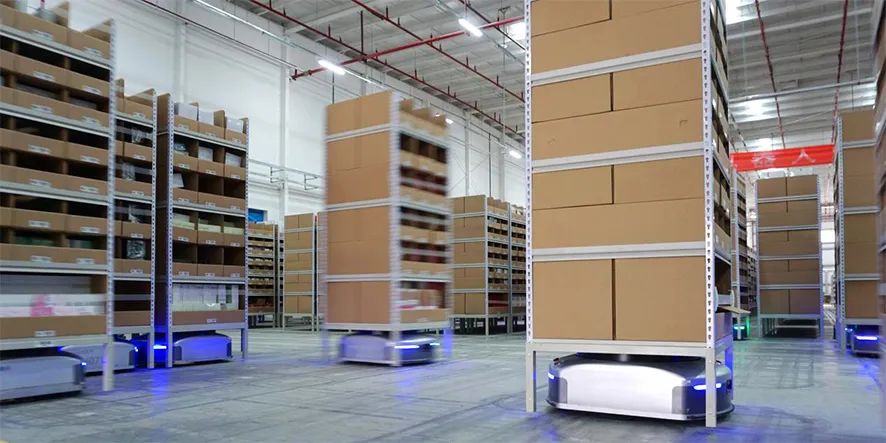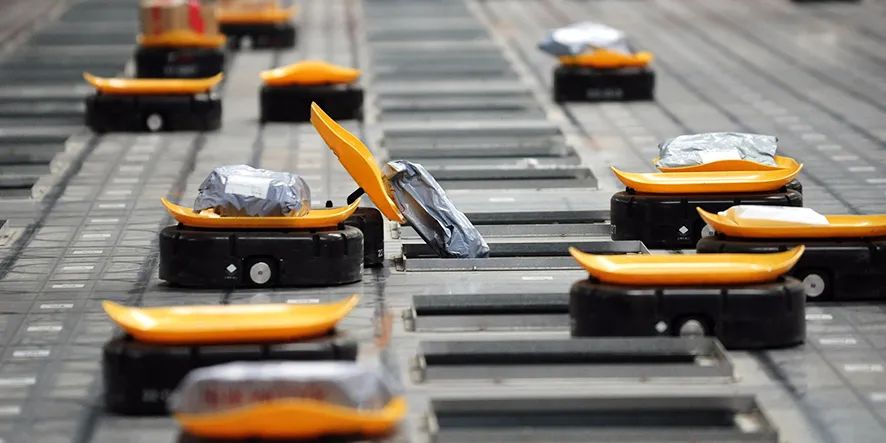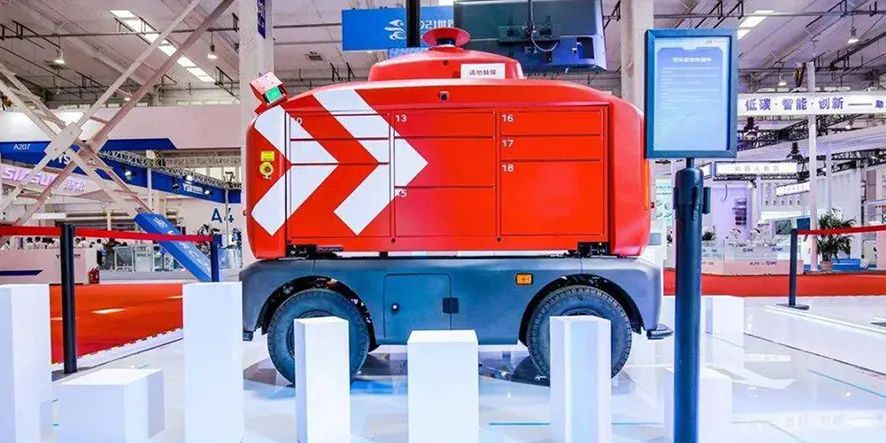1、物流机器人的当今发展状况
随着人类经济的快速发展、人工成本的上升、人工智能的普及,机器人逐渐渗透到了物流行业,优化和提高了物流资源、物流流程和物流效率,加快了物流行业的发展。
在物流领域,国内的机器人技术开始较晚,多数的仓储机器人制造商成立时间寥寥几年,但挑战中也充满了机遇。
截至2023年7月,物流机器人行业共2068件专利。其中,2021年物流机器人行业专利申请量达到近年来最高,为502件;2020年物流机器人行业的专利授权量最高,达到267件。
仓储机器人可以高效并快速完成多种任务,再物流行业中拥有巨大的市场。智能仓储和智慧工厂建立和快速发展,促进物流机器人的大规模应用,市场规模将进一步扩大,年市场销量预计将超10万台。



2、关键核心技术发展
导航定位技术:综合采用激光雷达、惯性测量单元、里程计等多种传感器,感知环境中障碍物位置与自身运动状态信息,结合基于多传感融合的目标追踪或位置估计算法对机器人进行定位,并规划到达目标点的最优路径。采用的导航方式主要有磁导航、激光导航、RFID导航、惯性导航、视觉导航、GPS导航等。
运动控制技术:通过两轮差速驱动或操舵轮控制转向方式,并结合路径跟踪控制算法,使得机器人能够准确到达目的地,提升机器人运动控制精度。
自动驾驶技术:利用车载摄像头、毫米波雷达、超声波传感器等多传感器感知环境信息,通过SLAM技术绘制道路 3D 地形图,并结合深度学习算法,帮助机器人实现自主运动与决策。
多机器人集群控制技术:采用多机器人集群行动控制策略,使用排它锁机制来保证多个机器人在同一时间内不会发生碰撞;选择重叠度最低的路径来尽可能降低多个机器人出现在同一道路上的概率;通过强制性的闭环路径地图设计来降低发生死锁的概率。
3、行业标准化推动行业发展
我国物流机器人当前还处于雏形阶段,市场不规范,行业无标准,用户对产品的功能识别性较低。
为推动行业发展,国家出台了相关标准,2019年全国自动化系统与集成标准化技术委员会发布了《物流机器人信息系统通用技术规范》,2020年6月国家发改委、交通运输部印发了《关于进一步降低物流成本的实施意见》,2020年7月国家发改委等13部门发文,支持自动驾驶、自动装卸堆存、无人配送应用基础设施。2020 年8月,交通运输部围绕智慧交通设施与建设,也发布相关指导意见。
我过物流机器人行业,目前没有一套完善统一的国家标准体系,在关键零部件、核心算法等方面与国外相比存在不小差距,导致我国物流机器人产品的应用范围还不够广。国产物流机器人产品出口海外市场需要面临不同的认证标准,例如美国UL认证、欧盟 CE认证、韩国KC认证等,需要企业从生产控制、技术研发、产品质量、安全环保等多方面制定标准,这也限制了我国物流机器人的出口,但也推进了我国物流机器人的发展及标准化。
4、产业链互助共赢
虽然我国物流机器人拥有国家政策的支持,及前沿科技的推动,但无序化的市场竞争、高昂成本的关键技术,使得我国物流物流机器人始终无法占据市场主导地位。
工业机器人领域,国产供应商占国内市场的比重从2014年的10%上升至 2019 年的35%,而大头仍由国外一级供应商主导,如Fanuc、安川、ABB和Kuka。据预测,国外一级供应商的市场比例在2025年预计下降到40%,这预示着国内机器人供应商的潜力,其研发与生产能力将步步高升,通过行业内的并购实现资源的整合,早日占据市场的主导地位。
未来国产物流机器人产业需要充分运用产业链并协同研发能力、跨领域融合、开源机器人操作系统等开放式创新方法,站在客户角度研发物流机器人产品,帮助客户提高作业效率、降低成本、创造价值。
深圳中菱科技,作为一家轮毂伺服电机和驱动器的供应商,在为物流行业提供高精度的轮毂电机和驱动器的同时,还一直为物流机器人提供多元化的服务,从轮胎不留痕、提供防护等级、节省能耗、定制刹车系统、限制最快速度、增大轮胎抓地力、可拆卸轮胎、定制特殊程序等众多方面,最大程度满足和丰富了物流机器人多种功能指标,促进物流机器人的多元化发展。
Mailbox:sales@zlingkj.com
Office address:303, 3rd Floor, Building B, Fenghuang Zhigu, Tiezi Road, Xixiang Street, Bao'an District, Shenzhen
Factory address:7th Floor, Building 1, XinLiKang LeChuangLi Smart Industry Park, No. 106 Changdong Road, Changping Town, Dongguan City, Guangdong Province, 523570.